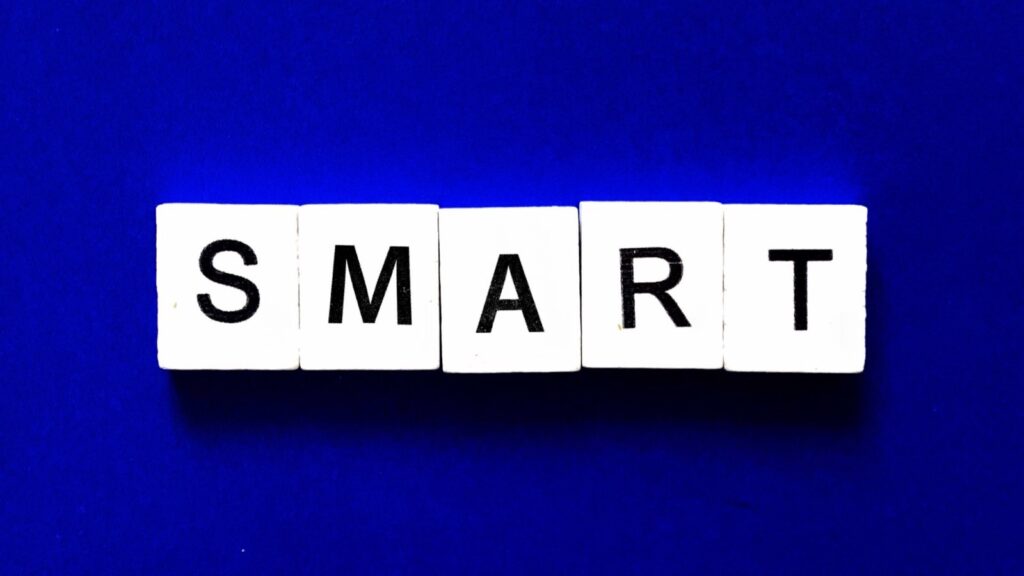Did you know that, according to a study by McKinsey, effective communication leads to a 20% increase in team performance? if you’re looking to turn your team into a winning powerhouse, you’ve come to the right place. In this blog, we’ll share 5 proven tips to help you build a successful team for your business.
To forge a winning team, focus on clear communication, shared goals, trust, diverse skills, and ongoing development.
Creating a winning team isn’t just about buzzwords; it requires practical strategies and insights. So, read on to discover the key ingredients that can help you mold an exceptional team.
Clear Communication and Shared Goals

Building a winning team begins with fostering clear communication. A shared vision is crucial, as team members need to understand their common goals. Without a clear direction and an understanding of their role, team members may find themselves lost in the shuffle.
Effective communication isn’t just about talking; it’s about listening and understanding. Encourage open dialogue, active listening, and the sharing of ideas. Foster an environment where team members feel safe expressing their opinions. When everyone understands the common objectives, they can align their efforts, working cohesively towards success.

Setting SMART goals (specific, measurable, achievable, relevant, and time-bound) ensures that these shared goals are clear and attainable.
To ensure that your efforts toward clear communication and shared goals are paying off, it’s essential to have the right metrics in place.
Here are a few metrics to look out for:
- Response Time: Measure the time it takes for team members to respond to messages, emails, or requests. A reduction in response time can indicate improved communication efficiency.
- Meeting Productivity: Track the productivity of team meetings. This can be assessed by measuring the percentage of meetings that achieve predefined objectives or by evaluating the number of action items completed post-meeting.
- Goal Achievement: Monitor the achievement of team goals and individual objectives. If more goals are met or exceeded, it’s a sign that shared goals are being effectively communicated and understood.
- Feedback and Surveys: Conduct surveys or gather feedback from team members about communication effectiveness and goal clarity. Use a Net Promoter Score (NPS) or a similar metric to gauge overall satisfaction with communication and goal-setting processes.
- Project Timelines: Analyze project timelines to see if they are consistently met or if they experience delays due to communication breakdowns. Fewer delays or reduced timelines indicate improved communication.
- Error Rates: Measure the frequency of errors or misunderstandings in tasks or projects. A decrease in error rates could indicate improved clarity in communication and shared goals.
By regularly tracking these KPIs and metrics, you can gauge the impact of your efforts in enhancing clear communication and shared goals. Review and analyze this data to make informed decisions and adjustments to further improve team performance.
Cultivate Trust

Trust is the bedrock of any winning team. Without trust, collaboration and innovation suffer. As Stephen Covey stated, “Trust is the glue of life.” It’s essential to instill trust among team members by keeping commitments, maintaining transparency, and creating a culture of reliability.
To build trust, lead by example and create an atmosphere where trust can flourish. Encourage vulnerability and admit your own mistakes. Team members should feel safe to take risks and know their contributions are valued.
Embrace Diversity of Skills

A winning team is not a homogenous group. Diversity in skills, experiences, and backgrounds brings fresh perspectives and innovation to the table. A team of clones can’t compete with a team that offers a range of expertise.
When forming your team, seek individuals with complementary skills, as this ensures that every aspect of the task is covered. Embracing diverse perspectives can lead to more creative solutions and improved problem-solving. It’s important to remember that diversity isn’t just about demographics; it encompasses different thinking styles and approaches to tasks.
However, with this diversity comes unique challenges that need to be addressed to ensure effective teamwork.
Some Common Challenges of Diversity:
- Communication and Collaboration Hurdles: In diverse teams, candidates may experience difficulties in understanding and working with colleagues from different backgrounds. This can lead to miscommunication, project delays, and a lack of cohesion.
Strategies for Overcoming Communication and Collaboration Hurdles:
- Team Building Activities: Incorporate team-building exercises to help team members bond and develop mutual trust and respect.
- Cross-Cultural Training: Offer cross-cultural training to enhance cultural awareness and promote effective cross-cultural communication.
- Clear Expectations: Clearly define roles, responsibilities, and expectations to minimize misunderstandings and foster collaboration.
2. Unconscious Bias: Unconscious biases, such as gender or age bias, can unintentionally affect decision-making and interactions within a diverse team. This can result in unequal opportunities and an unsupportive work environment.
Strategies for Addressing Unconscious Bias:
- Diversity Training: Implement diversity and inclusion training to create awareness and address unconscious bias.
- Diverse Hiring Practices: Ensure diverse hiring practices to build a team that reflects a variety of backgrounds and perspectives.
- Accountability: Hold team members accountable for their actions and decisions, promoting fairness and inclusivity.
3. Resistance to Change: Some team members may be resistant to change, or new ideas brought forth by diverse colleagues, leading to a lack of innovation and growth.
Strategies for Overcoming Resistance to Change:
- Encourage Open Dialogue: Foster an environment where team members feel comfortable expressing their opinions and concerns.
- Celebrate Diversity of Thought: Highlight the benefits of diverse perspectives and innovative thinking to gain buy-in from team members.
- Recognize Achievements: Acknowledge and reward team members who actively embrace change and contribute to innovation.
By addressing these common challenges and implementing the suggested strategies, teams can leverage the strengths of diversity and create a more inclusive and successful work environment.
Foster Ongoing Development

A winning team is constantly evolving and improving. To stay competitive, it’s crucial to invest in ongoing development, both individually and as a team.
Here are some key principles and actions to foster continuous growth and development within your team:
1. Individual Skill Development: Encourage team members to take ownership of their professional development. Provide opportunities for them to identify and acquire new skills, whether through online courses, workshops, or certifications. Foster a culture of continuous learning where team members are inspired to enhance their skills and knowledge regularly.
2. Mentorship Programs: Implement mentorship programs where experienced team members can guide and support less experienced ones. Mentorship not only facilitates knowledge transfer but also builds strong relationships within the team.
3. Cross-Training: Encourage cross-training, where team members gain knowledge and skills in areas outside their primary responsibilities. Cross-training enhances flexibility within the team and ensures that team members can step in when needed.
4. Challenging Assignments: Continuously challenge team members with new and diverse projects and responsibilities. Stretch assignments that push team members out of their comfort zones promote growth and innovation.
5. Constructive Feedback: Regularly provide constructive feedback to help team members identify areas for improvement. Create a feedback-rich environment where team members can openly discuss their strengths and areas where they can develop.
6. Goal Alignment: Align individual development goals with the team’s objectives and the organization’s mission. When team members see how their growth contributes to the bigger picture, they are more motivated to invest in their development.
7. Evaluation and Measurement: Establish clear criteria for measuring the progress of individual and team development. This can include performance metrics, feedback from peers and leaders, or the successful completion of training and development programs.
By implementing these strategies, you’ll create a team that thrives on growth and embraces change. A team that grows together becomes more adaptable, resilient, and better prepared to face challenges and seize opportunities in an ever-evolving business landscape.
Maintain a Positive Culture

The culture within your team is just as important as strategy. A positive and empowering culture can make or break a winning team. Nurture a culture of recognition and appreciation. Celebrate achievements, no matter how small, and provide constructive feedback when necessary. When team members feel valued and motivated, they’ll go the extra mile to reach their collective goals.
Tools and Resources:
In today’s digital age, there are various tools, software, and resources that can enhance your team’s efforts in building a positive culture and implementing the strategies mentioned above.
Consider utilizing the following:
- Communication Platforms: Tools like Slack, Microsoft Teams, or Zoom can streamline team communication and collaboration, fostering a positive environment.
- Project Management Software: Applications like Asana, Trello, or Monday.com help in setting and tracking goals, tasks, and project progress efficiently.
- Mentorship Programs: Implement mentorship resources or platforms for skill development and peer-to-peer support.
- Training Resources: Utilize online courses, webinars, or learning management systems to support ongoing skill development and professional growth.
Long-Term Strategies:
Building a positive team culture is not a one-time effort. It requires long-term strategies and consistent reinforcement to ensure that the culture remains positive and resilient.
Here’s how to maintain a positive culture over time:
- Leadership Modeling: Leadership sets the tone. Ensure that leaders consistently model the behaviors and values that reflect a positive culture.
- Regular Check-Ins: Schedule regular one-on-one or team check-ins to gauge team members’ well-being and address any concerns promptly.
- Feedback Loops: Create a feedback-rich environment where team members are encouraged to provide feedback, make suggestions, and voice concerns.
- Adapt and Evolve: Be open to change and evolution in your team’s culture as it grows and develops. Adapt to the evolving needs and expectations of your team.
These long-term strategies are vital to ensuring that the positive culture you’ve built remains robust and doesn’t erode over time. They provide a roadmap for continuous reinforcement and growth within your team.
In conclusion, forging a winning team requires more than just assembling a group of individuals. It involves cultivating a culture of trust, clear communication, and shared goals while embracing diversity and promoting continuous development. By implementing these strategies, you can create a team that excels and propels your organization to success.

If you’re ready to take the next step in building your dream team, we’re here to help. GeeksPod assembles remote teams of engineers for your projects, whether you’re a startup or a full-fledged corporation. Don’t miss the opportunity to transform your team and elevate your organization. Get in touch with us today to start your journey to success. To explore our special offer, visit offer.geekspod.co/
